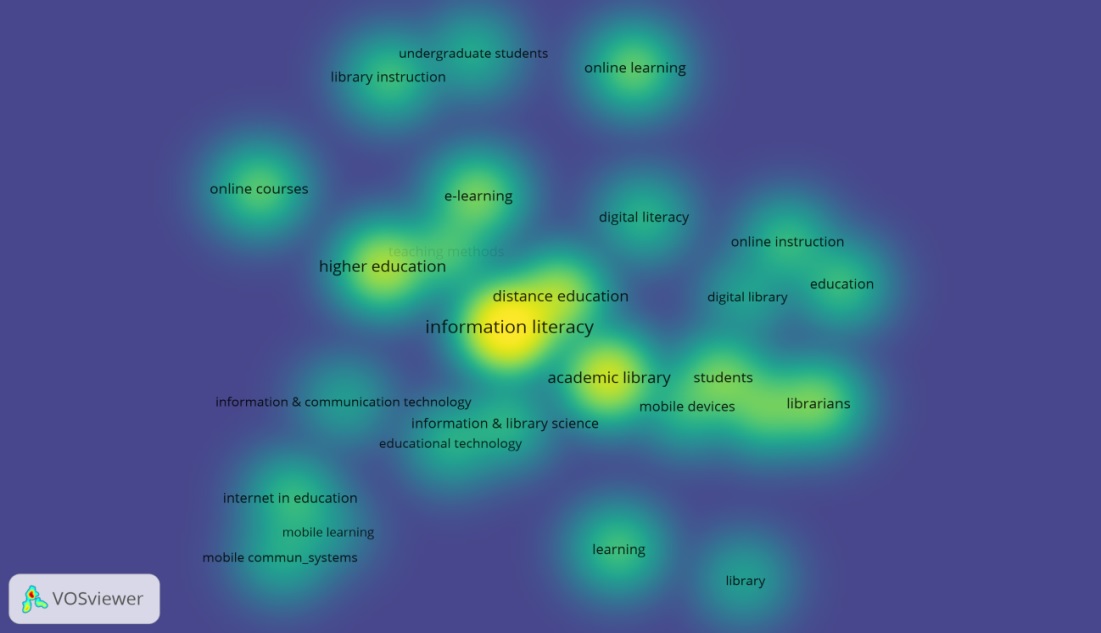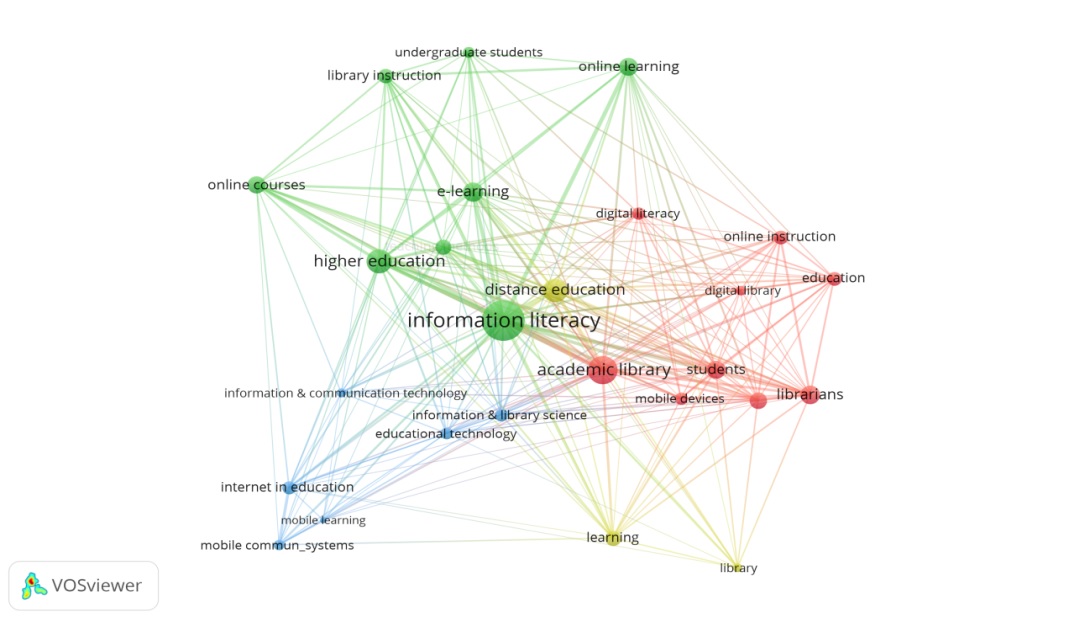Resumen
Este artículo ofrece un análisis bibliométrico de la producción científica sobre Alfabetización en Información Móvil (m-IL) en Educación Superior publicada entre 2006 y 2017, teniendo en cuenta los artículos cubiertos por Web of Science (WoS), Scopus, Library and Information Science Abstracts (LISA ), Bibliotecas y resúmenes de ciencia y tecnología de la información (LISTA) y Centro de información de recursos educativos (ERIC). La bibliometría, como parte integral de la metodología de evaluación de la investigación, nos ayuda a identificar la evolución del tema durante el período estudiado. En esta investigación buscamos: a) identificar las revistas más relevantes que publican literatura en este campo, b) calcular la productividad promedio de los autores e identificar a los autores más productivos, y c) descubrir las tendencias más significativas en este campo académico, a través de análisis estadístico y de palabras de co-ocurrencia de los títulos y las palabras clave utilizadas para indexar los artículos. Los resultados bibliométricos de esta investigación proporcionan una instantánea de la literatura sobre Alfabetización en información móvil que destaca las revistas, los autores y las palabras clave más relevantes.
Abstract
This paper offers a bibliometric analysis of the scientific production on Mobile Information Literacy (m-IL) in Higher Education published between 2006 and 2017, taking into account papers covered by Web of Science (WoS), Scopus, Library and Information Science Abstracts (LISA), Library and Information Science and Technology Abstract (LISTA), and Education Resources Information Center (ERIC). Bibliometrics, as an integral part of research evaluation methodology, helps us to identify the subject’s evolution over the period studied. In this research we aim to: a) identify the most relevant journals that publish literature in this field, b) calculate the authors’ average productivity and identify the most productive authors, and c) discover the most significant trends in this academic field, through statistical and co-occurrence word analyses of the titles and the keywords used to index papers. The bibliometric results of this research provide a snapshot of the literature on Mobile Information Literacy that highlights the most relevant journals, authors, and trending keywords.
Highlights
Se muestra una clara prevalencia de terminología específica en los títulos de las publicaciones (ALFIN, bibliotecas, online, aprendizaje, estudiantado) y en las palabras-clave seleccionadas por los autores (ALFIN, biblioteca académica, educación a distancia, enseñanza superior y enseñanza online).
Hay interconexiones relevantes y convergencias entre títulos y palabras clave. Esto se confirma si tenemos en cuenta los contenidos de la producción científica más relevante, en relación a la frecuencia de uso de los términos clave.
Aunque la enseñanza online, a distancia y los dispositivos móviles son, junto a los top term (ALFIN), los más utilizados, no es el caso de la enseñanza móvil. Este hecho muestra que se trataría de una temática que se halla en expansion y, también, abrirá distintas perspectivas en los próximos años.
There is a clear prevalence of specific terminology in the titles of publications (Information literacy, library, online, learning, students) and in the keywords chosen by the authors (information literacy, academic library, distance education, higher education, and online learning).
There are relevant interconnections and convergences between titles and keywords.
This is further confirmed if we take into account the contents of the most relevant scientific production, regarding the frequency of use of the key terms.
Although online learning, distance learning and mobile devices are, together with the top term (information literacy), among the most frequently used, this is not yet the case with mobile learning. This shows that it is a topic that is expanding and, also, it is going to open up multiple viewpoints in coming years.

Figure 1: Keywords density view. The colours scheme ranges from blue–green to yellow, where yellow is related to the highest item density and blue denotes the lowest item density.

Figure 2: Cluster view of terms in titles.

Figure 3: Cluster view of terms in keywords.
